Bob Haack came into the market one day last week and bought a roll of painter’s tape. It turns out that he has an orchard with 200 nut trees, most of them chestnuts, and he was going to do some grafting. Could I, I asked, come see the orchard? Indeed I could. So yesterday morning, there I was on Bob’s front porch. The first thing that I noticed was that the Haacks have the prettiest view in Antrim County.
Now I know that I will get many arguments about this, and I agree with all of you who also have the prettiest view. Keep in mind that my photo in no way does it justice, and I believe I’ll have to take Babs over there for a do-over. Anyway, the Haacks bought the house for the view, and thought it was nice that there was an orchard next door. When the orchard went on the market, what could they do? They bought it, and Bob realized he had accidentally become a farmer.
He has a day job as a forest entomologist, and must work on his chestnuts on weekends and vacation days, so the deer derive as much benefit from his work as he does. Nevertheless, he loves it. His pride and joy is this particular chestnut, a phenomenal producer formally identified as “Bob 93.”
I learned far more than will possibly fit in one post, and have a lot of homework to do before I can write about it coherently, but I secured permission to come back over the course of the year to take more pictures of the orchard at different stages. We will be learning a lot more about chestnuts. Today, let’s stick to grafting.
Bob carefully cut twigs from his favorite trees, and inserted them into slits he had prepared on freshly-lopped limbs of other trees that were not producing as well. The tape and special grafting compound bandaged up the cut, the incision, and the insertion. With luck the new twig will become part of the rootstock tree. Bob is careful and lucky. Over 90% of his grafts are successful. Here are some from last year.
Bob left that large limb in place to help draw moisture up the trunk to the grafts. He’ll prune it away eventually. The grafting, the record-keeping, the pruning, the irrigating . . . all that work before a farmer even knows if there will be a harvest, or if he can get to it before the deer and the squirrels do. Much more to tell you about, but for today, let’s just end with a discussion of The Burrs.
Chestnuts ripen inside lethal weapons called burrs. Sometime in late September or October, on a date confided only to the deer and squirrels, the burrs split and release the chestnuts, which fall to the ground, where the farmer hopes to find them before they have been eaten. The burrs remain on the tree until, in their own good time, on a date maximally inconvenient to the farmer, they, too, fall to the ground and must be cleaned up with great care. Some varieties drop burr and chestnut together, making for a time-consuming and potentially painful harvesting process involving heavy leather gloves and swearing. Other varieties hold onto their burrs over the winter and cheerfully create a mess in the spring. There is one stubborn tree in Bob’s orchard that is still holding onto last year’s burrs.
You do not want to wear flipflops in a chestnut orchard. Here is an illustration of spines driven into the sole of my trusty Merrells.
I brought a sample home, the better to photograph it close up to show you its extraordinary weapons array. I found a complete, undamaged burr, but when I left it on the desk Miss Puss batted it to the floor, I stepped on it . . . well. Let’s just say that it is lucky for Miss Puss that I was wearing the Merrells. I digress. Observe.
That is the inside of the burr. The three little dots are the places where three chestnuts grew—the usual number. See those spines? Ha. Looky here.
Now that is some bristly burr. The Cowboy is not allowed to get anywhere near that burr. It’s an astonishing thing really.
OK, it occurs to me that I have not included an actual chestnut. Here you go.
It’s not a very good example of Bob’s chestnuts. It was just one the deer and squirrels overlooked last fall. We have barely scratched the surface of this nut-growing operation. Bob Haack grows Hansen’s Walnuts and Heartnuts, too, and I can hardly wait to tell you about those. He referred me to other people who are even more deeply involved in the enterprise than he is. He referred me to the Chestnut Growers, Inc., cooperative. We’ve only just begun.

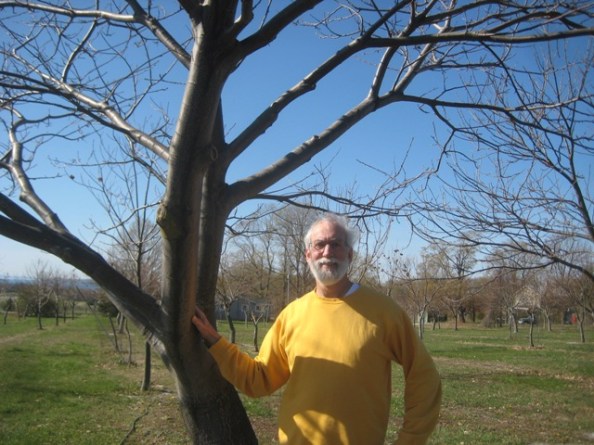
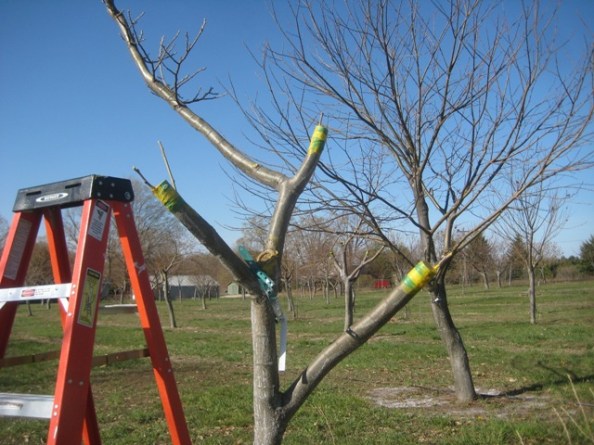
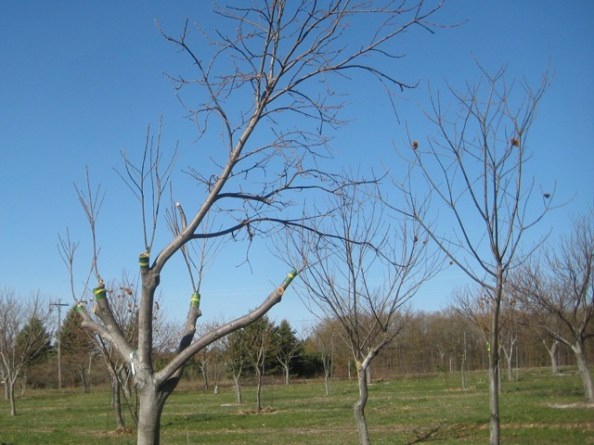
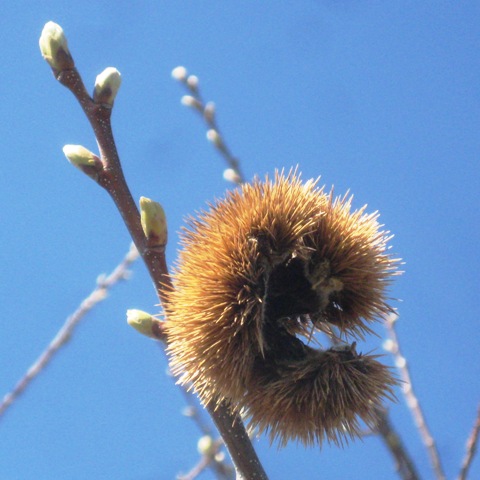
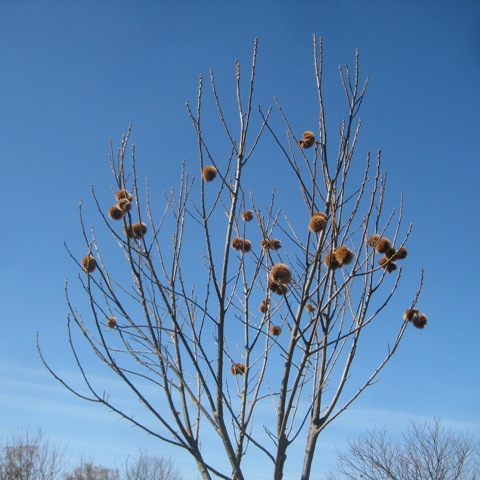
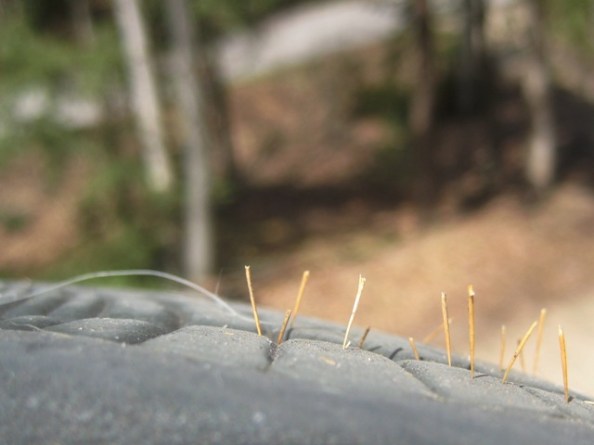

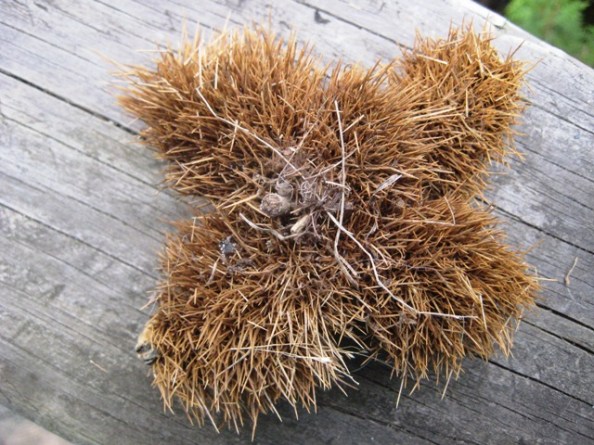
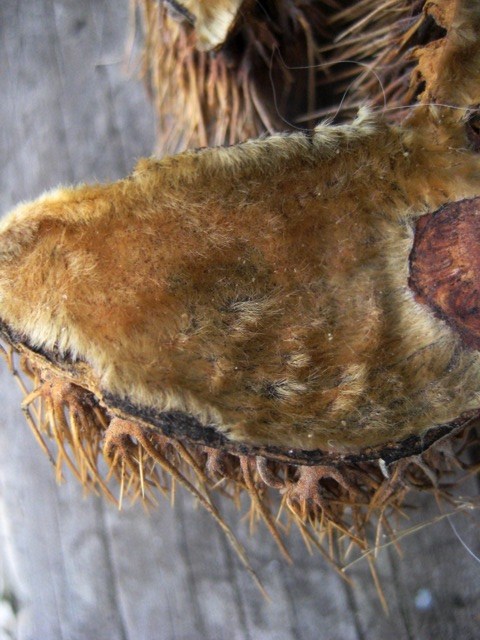
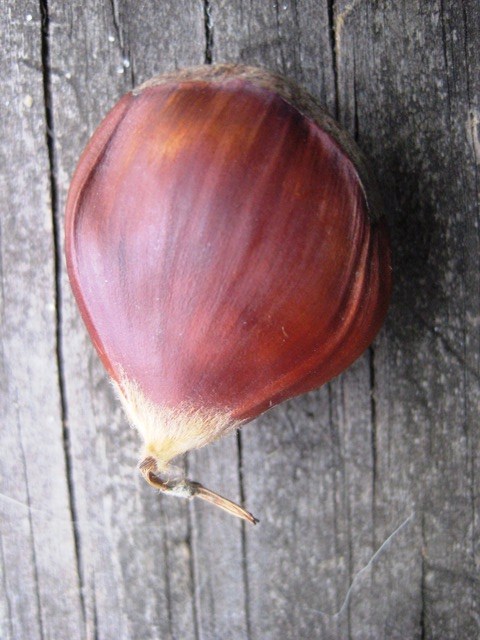
p.j. grath
April 24, 2010
Gerry, you have the most intriguing titles for your posts! And today you’ve got my mouth watering. All those pictures remind me of chestnuts a friend brought me last year and the delicious soup I made with them for Thanksgiving.
Gerry
April 24, 2010
Just think–now you have a new source for chestnuts AND recipes! (Bob says chefs are doing all kinds of things with the dried slices.)
Carsten
April 24, 2010
Very interesting Gerry. I like chestnuts. Roasted with salt and a little cold butter of the best quality.
-My fingers get hurt with small sharp fragments of the shells under my nails…
I didn’t realize that farmers grafted teh trees. But of course they do.
Gerry
April 24, 2010
According to Bob, they plant some trees as seedlings, too. They do a lot of experimenting, one way and another, trying to revive chestnuts on this continent. (The American Chestnut was pretty much wiped out by a blight around 1900. As a result what was once an important food source has become an exotic item.)
Katherine
April 24, 2010
Those burs look lethal. Don’t believe I’ve ever had a chestnut. Soup sounds very interesting though.
Gerry
April 24, 2010
I think we must experiment with chestnuts this fall. I am sure we can secure some from Bob. He’s given some thought to a “pick your own” operation. The burrs are a discouragement, but I have leather gloves and a good attitude.
Anna Surface
April 24, 2010
Wow, that is interesting about chestnuts! What one can learn! I’ve tried chestnut and I’m not fond of the flavor. Those burrs… ouch! And yes, the title for this post was intriguing and a good one. 🙂
Gerry
April 24, 2010
Thank you Anna. I’m trying to improve my headline-writing skills. This is not an art that comes naturally.
Reggie
April 25, 2010
That was a fascinating post, Gerry.
I have never seen a chestnut tree, or even eaten chestnuts before.
I also had no idea they grew like that, or that they were enclosed in such spiky hedgehog-like burrs! Those sure look scary.
And who knew that one could graft branches from productive trees onto less productive ones? I mean, I guess it’s obvious for a farmer, but I’d never thought of that.
Wow.
Looking forward to learning more.
Preston
April 25, 2010
I never knew about the chestnut as you have described. I really enjoyed the burr truth you revealed. Never really understood grafting neither. All I know is how the grass grows in Kansas. Hmmm….
Cindy Lou
April 25, 2010
Who knew? I’ve never had a chestnut and knew nothing about them – except for the line “chestnuts roasting on an open fire” – until now! Thanx to you and Bob!
Loking forward to the rest of the chestnut journey!
Babs Young
April 25, 2010
These chestnuts look like buckeyes, but a quick reading tells me they are not related. Being a Buckeye, I always loved that The Ohio State University, with the Buckeye as its mascot, is the only University to have a poisonous nut as a mascot. Now I like the trees in this post, but that view, WOW. Call me Gerry, let’s go.